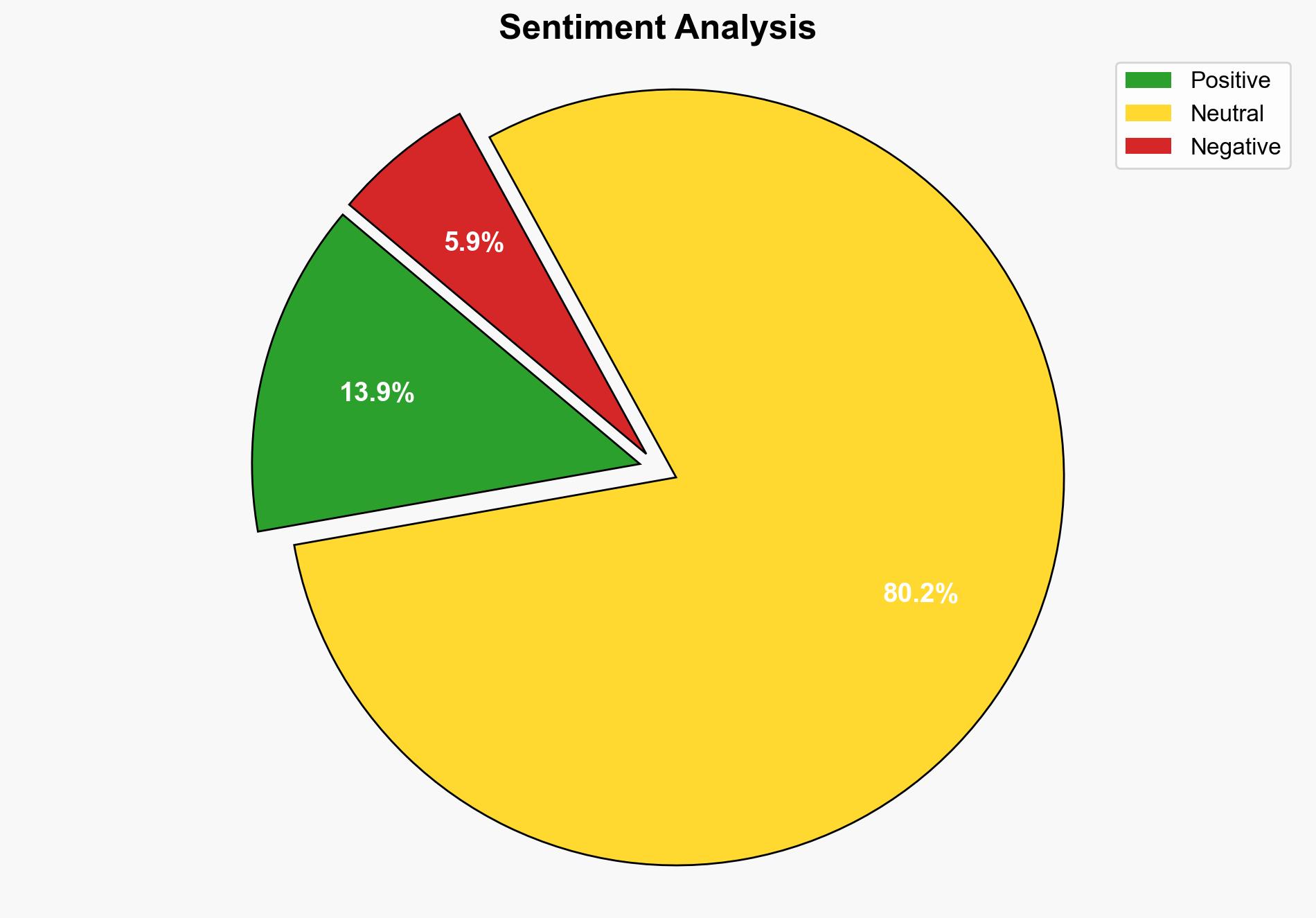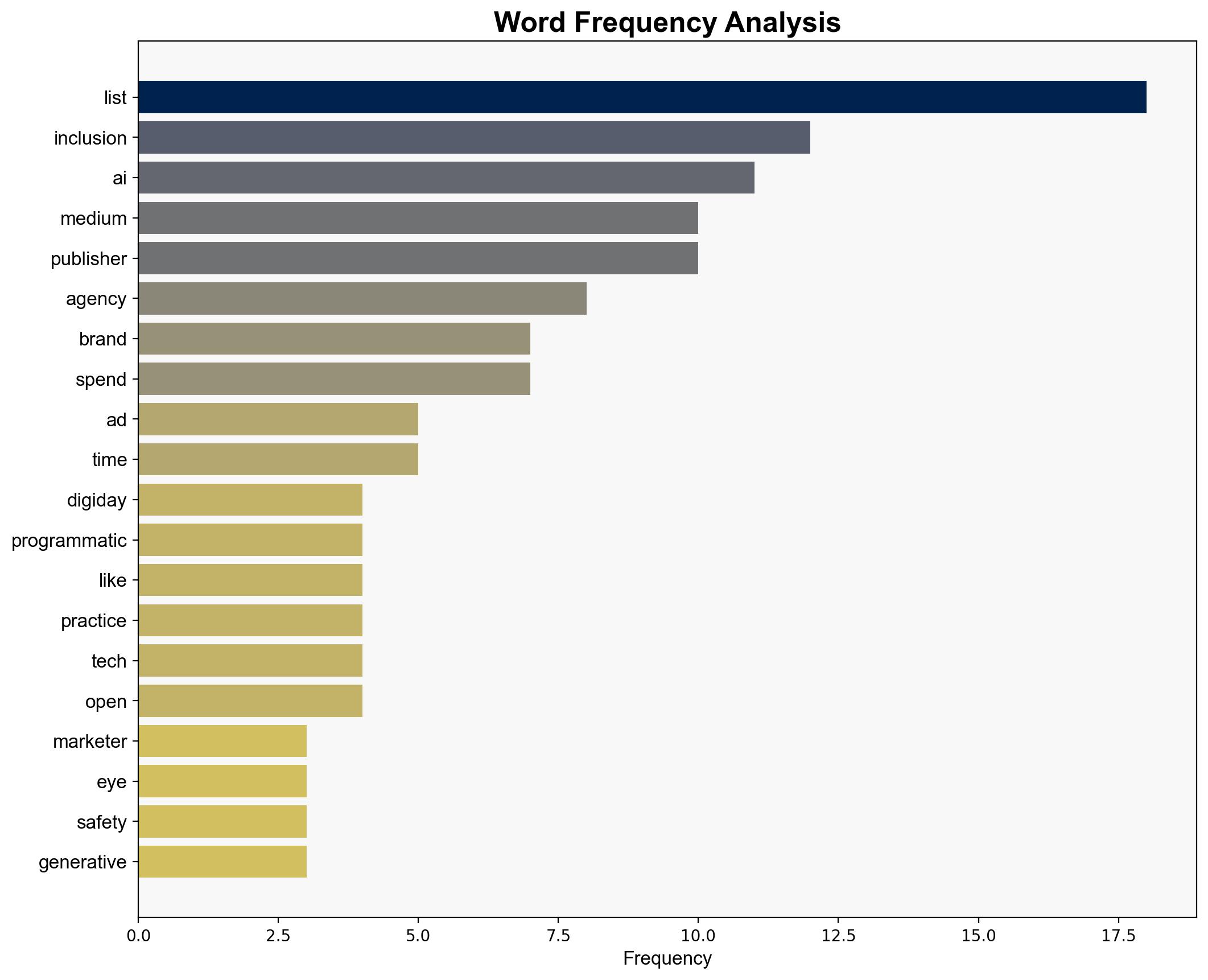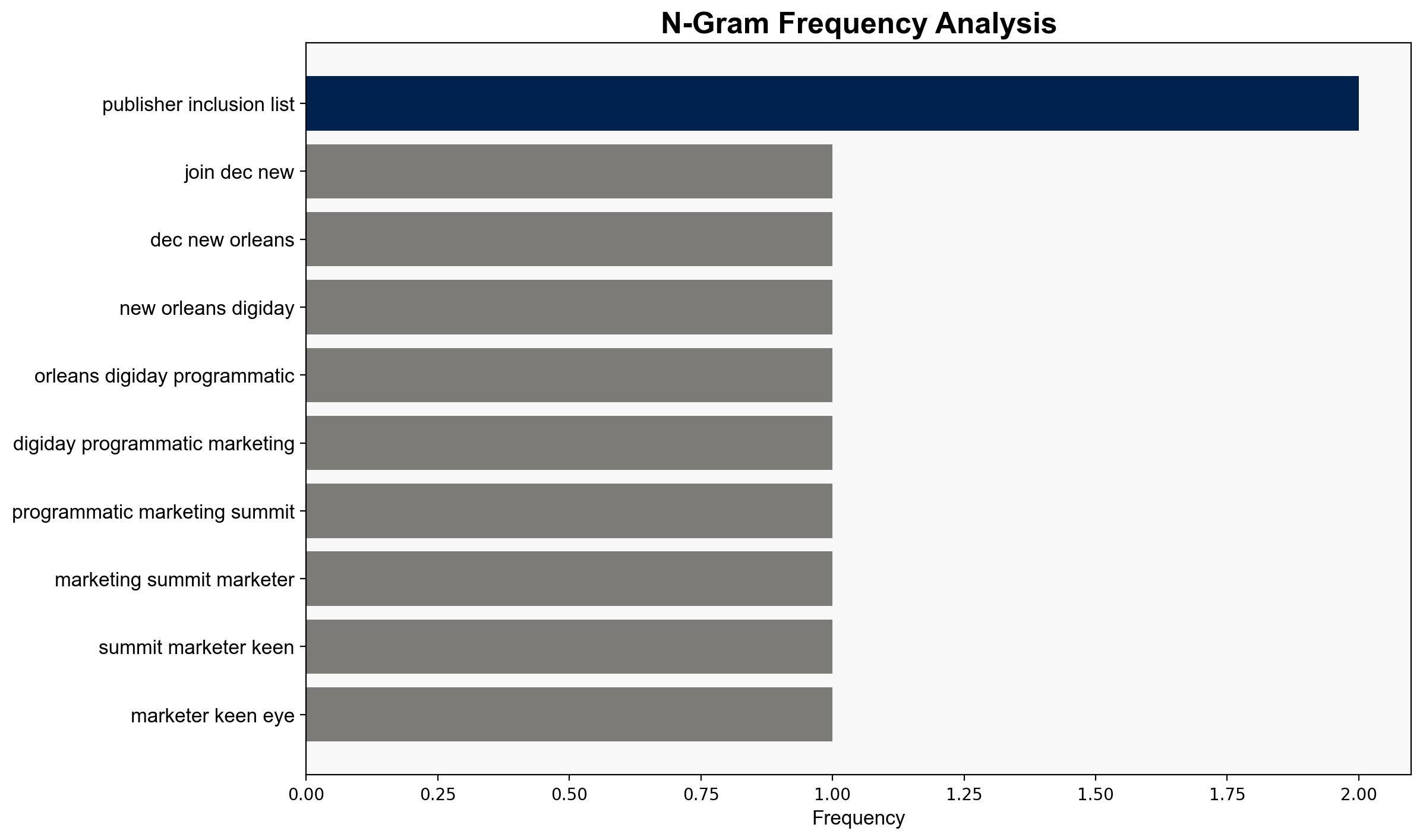Media agencies look to AI to reduce inclusion list toil – Digiday
Published on: 2025-11-05
Intelligence Report: Media agencies look to AI to reduce inclusion list toil – Digiday
1. BLUF (Bottom Line Up Front)
The integration of AI in media agencies for managing inclusion lists is likely to streamline operations and reduce costs, but it also poses risks related to brand safety and the exclusion of smaller publishers. The hypothesis that AI will enhance efficiency while maintaining quality control is better supported. Confidence Level: Moderate. Recommended action is to implement AI with robust human oversight and adaptive strategies to address potential biases and inaccuracies.
2. Competing Hypotheses
1. **Hypothesis A**: AI will significantly improve the efficiency and accuracy of compiling inclusion lists, reducing costs and time while maintaining or enhancing brand safety.
2. **Hypothesis B**: The use of AI in managing inclusion lists will lead to increased risks of brand safety breaches and exclusion of smaller publishers, potentially harming diversity and reach.
Using Analysis of Competing Hypotheses (ACH), Hypothesis A is better supported by the evidence of AI tools like ChatGPT and Microsoft’s Copilot being used to quickly expand and refine inclusion lists. However, Hypothesis B is supported by concerns over AI’s current limitations in understanding nuanced brand safety requirements and the potential exclusion of smaller publishers.
3. Key Assumptions and Red Flags
– **Assumptions**: AI tools can accurately assess and categorize publishers for brand safety. Human oversight can effectively mitigate AI’s limitations.
– **Red Flags**: Over-reliance on AI without adequate human intervention could lead to significant brand safety issues. The exclusion of smaller publishers may reduce market diversity.
– **Blind Spots**: The potential for AI to misinterpret context or cultural nuances in content, leading to inappropriate ad placements.
4. Implications and Strategic Risks
– **Economic**: Cost savings from AI could be offset by potential losses from brand safety breaches.
– **Cyber**: AI systems could be vulnerable to manipulation or bias, impacting decision-making.
– **Geopolitical**: Exclusion of smaller, potentially regional publishers could lead to a concentration of ad spend in larger, established entities, affecting media diversity.
– **Psychological**: Trust in AI systems may decline if brand safety incidents occur, leading to increased skepticism and resistance to AI adoption.
5. Recommendations and Outlook
- Implement AI with strong human oversight to ensure quality control and address potential biases.
- Develop adaptive strategies to include smaller publishers and maintain diversity.
- Scenario Projections:
- Best Case: AI improves efficiency and accuracy, leading to cost savings and enhanced brand safety.
- Worst Case: AI failures lead to significant brand safety breaches and loss of trust.
- Most Likely: AI enhances efficiency but requires ongoing human intervention to manage risks.
6. Key Individuals and Entities
– Tim Lathrop
– Evelyn Mitchell Wolf
– Alexis Faulkner
– Wayne Blodwell
– Taji Zaminasli
– Louise Owens
– Jonathan Dsouza
7. Thematic Tags
media technology, AI integration, brand safety, digital marketing, operational efficiency





